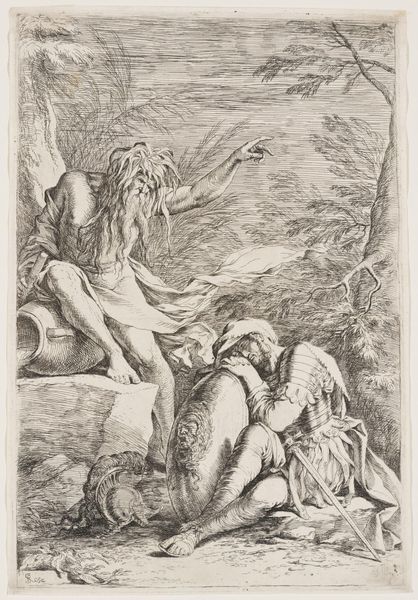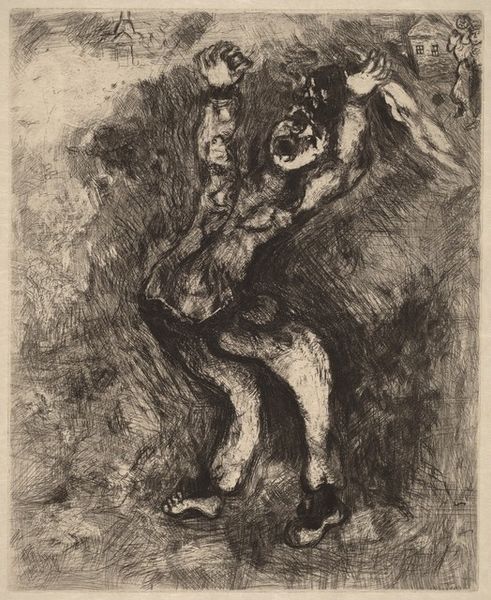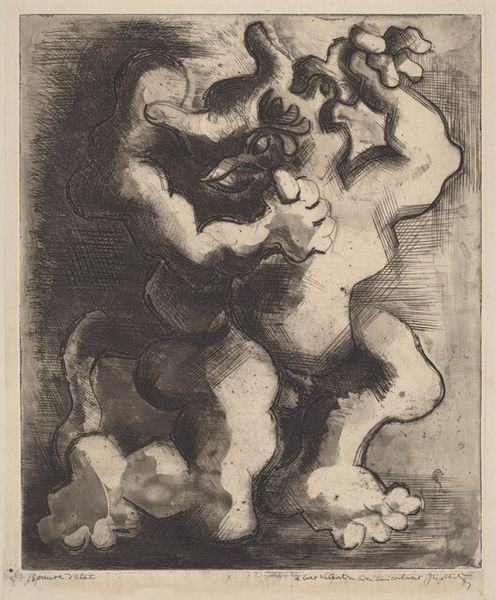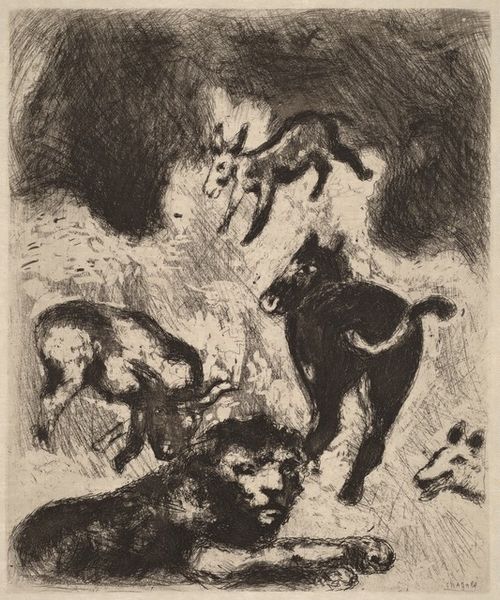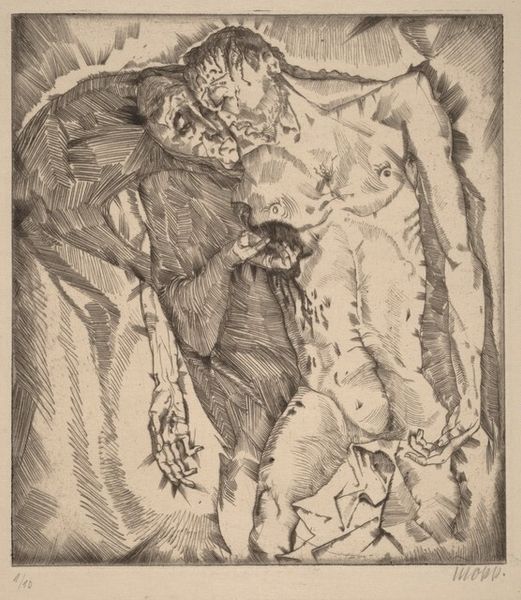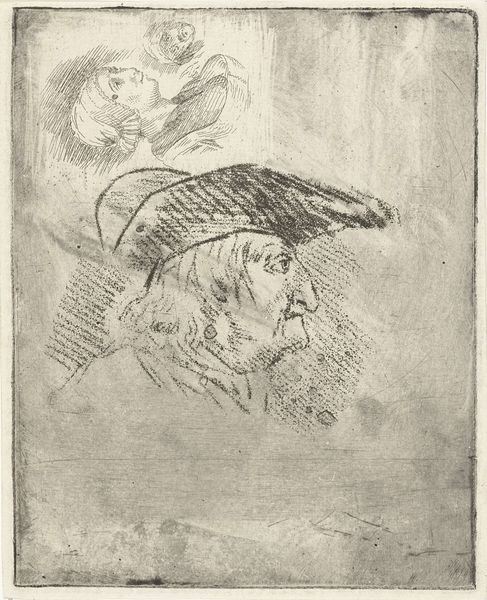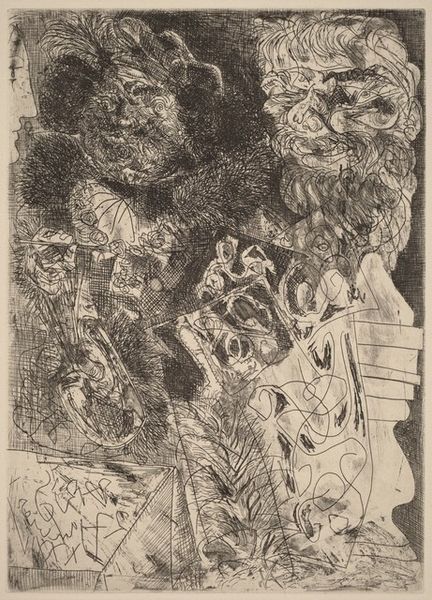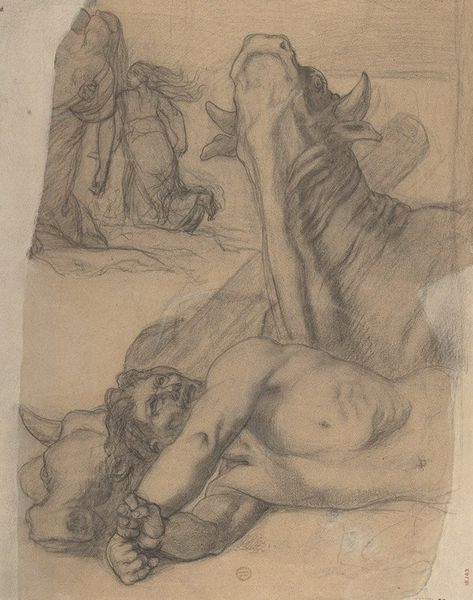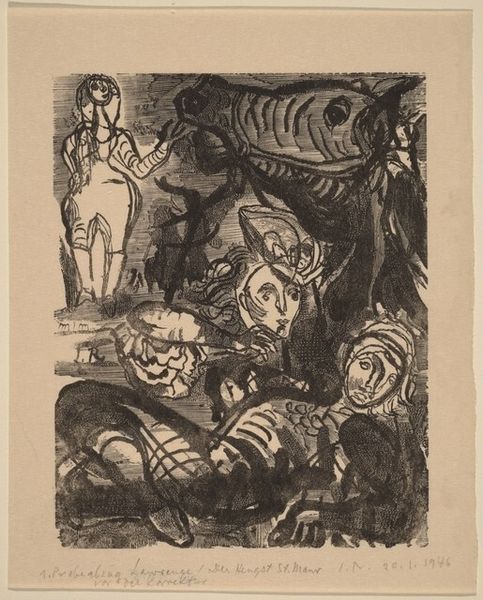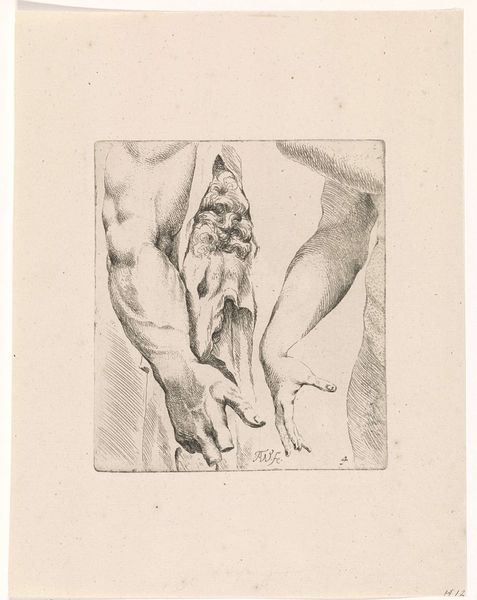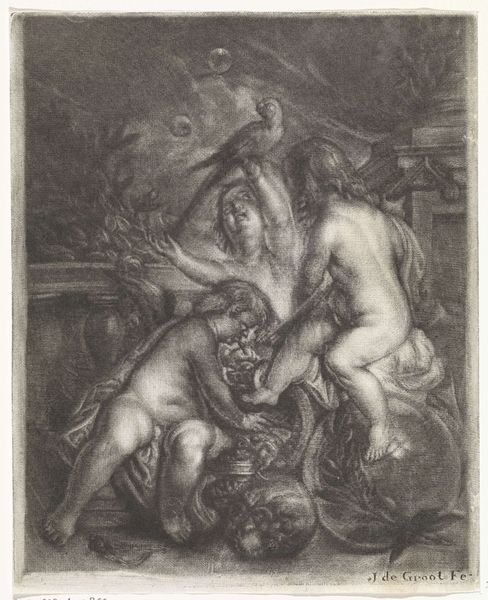
drawing, print, etching, intaglio
#
portrait
#
drawing
#
cubism
#
ink drawing
# print
#
etching
#
intaglio
#
figuration
#
geometric
#
line
#
history-painting
#
surrealism
#
modernism
Copyright: National Gallery of Art: CC0 1.0
Editor: This is Picasso's "Bull, Horse, and Reclining Woman II," also known as "Femme torero II," created in 1934. It's an etching, part of his intaglio prints. The chaotic composition feels really charged with tension, but also quite dreamlike. How do you interpret this work, especially given the era it was made? Curator: It’s fascinating, isn't it? Looking at this piece through a critical lens, especially considering its creation in 1934, we must acknowledge the socio-political anxieties brewing in Europe, leading up to WWII. The bullfight, deeply embedded in Spanish culture, can be seen as a metaphor for power, violence, and the struggle between the oppressor and the oppressed. Where do you see these power dynamics manifesting visually? Editor: I guess the bull's dominance over the woman's body? And the horse feels almost frantic. Does that speak to the political unrest you mentioned? Curator: Precisely. Consider the female figure—she appears both passive and central to the composition. We can delve into feminist readings here: Is she a symbol of a nation being dominated? Is she complicit? How does Picasso challenge or reinforce the traditional gender roles of his time, specifically within the context of Spanish society and its performative machismo? The etching becomes more than just an image; it's a site of contested meanings reflecting the instability and anxieties of the time. Editor: I hadn’t considered it that way before, but it makes a lot of sense. It's like Picasso is visualizing all the anxieties of a nation on the brink. Curator: Exactly! It encourages us to confront not only the artist's intentions but also the social constructs that shaped both the artwork and our interpretations of it today. Editor: That's a really powerful way to understand it. I see the etching in a completely different light now. Curator: And that's the beauty of art – constantly re-evaluating through different perspectives.
Comments
No comments
Be the first to comment and join the conversation on the ultimate creative platform.
